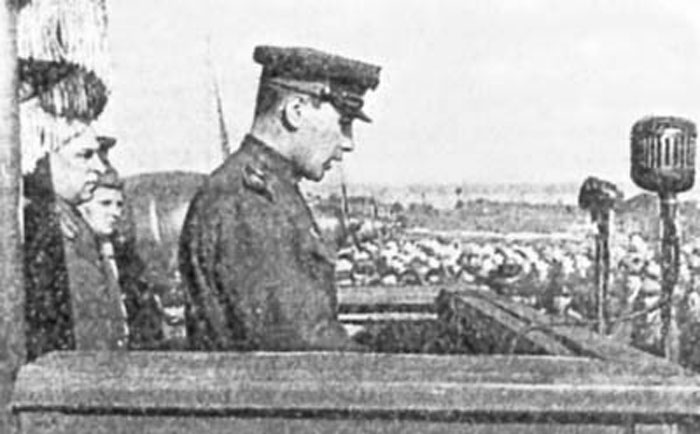
Colonel Alexandrer Pokryshkin, commander of 9 giad, with his subordinates G.A. Rechkalov, A-.V. Fyodorov and A.I.Trud received four new La-7s on the airfield of Zavod 381 in Moscow on October 21, 1944.
One for Division HQT and three went to 16 giap - serial numbers 38100154,
38100554 and 38100854 (Tabachenko, p.526).
There was intention to rearm 16 giad from American Cobras to Soviet Lavochkins.
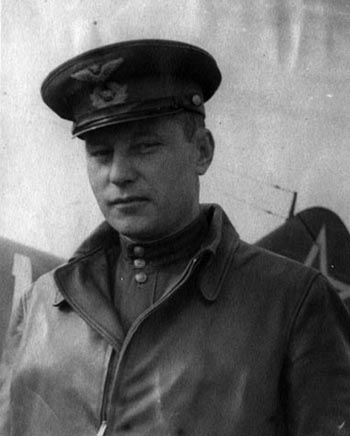
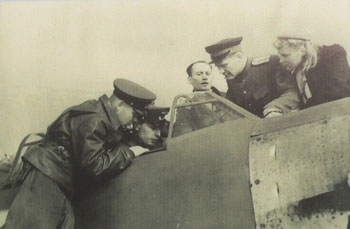
One of the planes was for the headquartier, while other three planes (numbers 38100154, 38100554 and 38100854) went to 16 giap; from the numbers, it is likely that their bort numbers were 01, 05 and 08 of serie 54.
The plane aside Pokryshkin on the photo seems numbered 1x; the relation to the serials has still to be clarified.
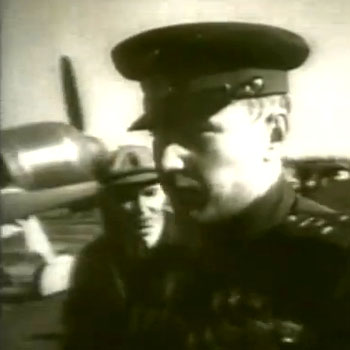

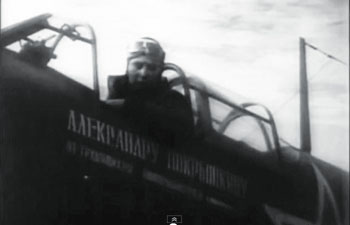

All the planes had the inscription "For Alexander Pokryshkin from workers of Novosibirsk" on the left side of fuselage; in fact they were a gift to the famous ace from his fellow countrymen.
The slogan was initially white; then, according to Igor Zlobin, a red filling was introduced, so the inscription became red with white outline.
Note, on the first photo, how glossy was the nose of the plane; this makes difficult to understand how it was painted. A red nose was reported by some source, but it isn't clear what it means exactly.
In profiles, we can find both the representation with a fully red cowling, both with a red frontal ring, according to the guess of the authors.
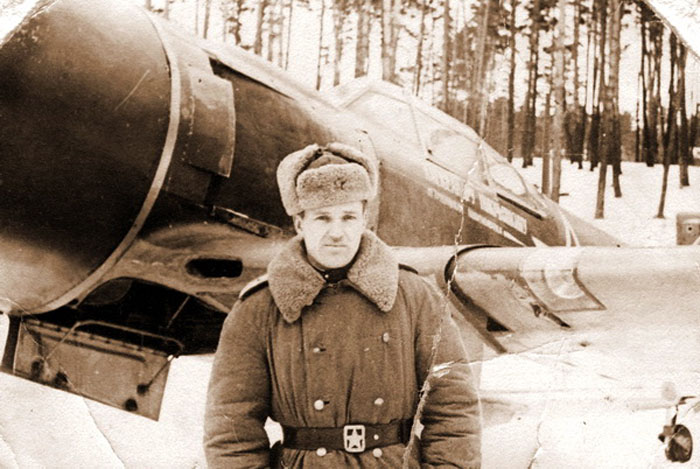
On November 1, 1944, the men of 16 giap tested their La-7 at the airfield of Jezowe, Poland, close to the front line.
The fourth pilot of the sequence, capt. Klubov, took off and made a succession of perfect acrobatic manoeuvres, enthusiasming the bywatchers, very interested to see what the new machine could do.
The following accident was surreal. Klubov started his landing run, but a cross wind deviated slightly the plane, that went out of the landing strip and slowly flipped itself onto its back, in front of horrified bystanders. The poor pilot died under his plane.
Colonel Pokryshkin, that had been very favourable to rearming with La-7s till that time, changed his mind and preferred to mantain his division on P-39s, that had an excellent visibility on the ground, instead of retraining his pilots with planes as the La-7s that landed on their tail, with the nose up hidding the airstrip.
The photo on the right shows a pilot and one of the La-7s of the unit (not sure that it's the same plane of Klubov, but probably it's identical apart for the number).
On the photo, we can see the slogan, and an unusual landing light on the leading edge of the left wing, not standard on La-7s.
The photo was kept as a proof that the cowling of the plane wasn't fully red, because it seems to see the division between the dark greys of the upper surface and the light blue of the lower surface.
Being the surface of the cowling so glossy, this could also be a reflection of the snow.
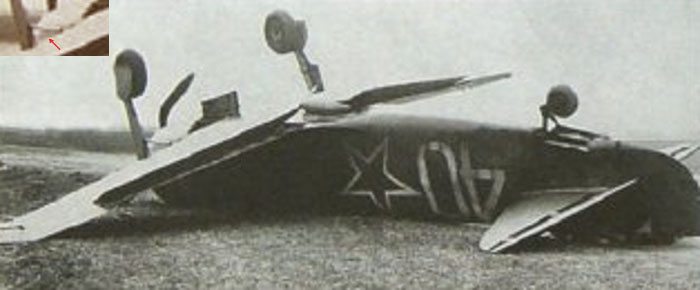
The photo of the reversed plane after the accident shows other details. Again, the part under the cowling looks light, but this can be the reflection of the sky on a glossy red surface; at the same way, the glossy red stars under the wings don't contrast on the light blue surface.
Only a thin darker triangle between the wing and the leg actuator weakly suggests that there is a change of shade between the sides of the cowling, the front ring and the ventral part. Without being a proof, this suggests that only the front ring was red, and the sides of the cowling were only polished to reduce drag, as seen on other La-7s.
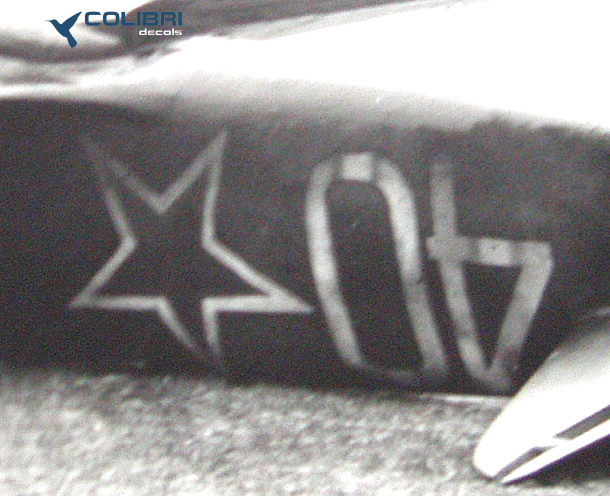
The number 40 is very strange: its shade isn't uniform. The position of the dark lines isn't starange: it is the position where the cut of a stencil has to be interrupted to sustain the mask of the central part of the digits, and this leaves interruptions on the number that have to be retouched. The strange thing is that the retouches are very visible, while they are unvisible on all other La-7s.
The possible explanation is that the number could have been repainted at the unit, perhaps with silver paint, and the work tun out in this way.
Another stange thing: according to reports, the series number of the plane was 38100554, that would suggest a bort number 05 and not 40. Could it be that the number was changed?
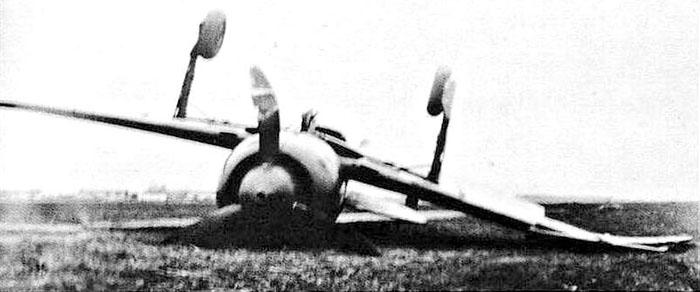
Another sad photo of plane 40. One has the confirmation of the glossy finish of the nose, that reflects the wings and wheels on the background of the sky.
Another noticeable thing is the white line on the prop blade; it doesn't match to the line on which the blade is bended, so it has to be not a scratch but a painted line, likely on all 3 blades.
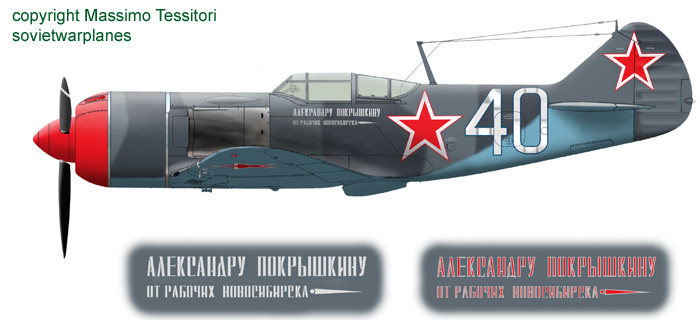
A profile of the plano 40 of Klubov.
It is represented in its initial form, with the fully white slogan on the left side only. According to Igor zlobin, the slogan was modified into red and white at the date of the accident that caused the death of Klubov.
I've considered this representation of the painting of the nose as the most likely on the base of the considerations written commenting the photos.